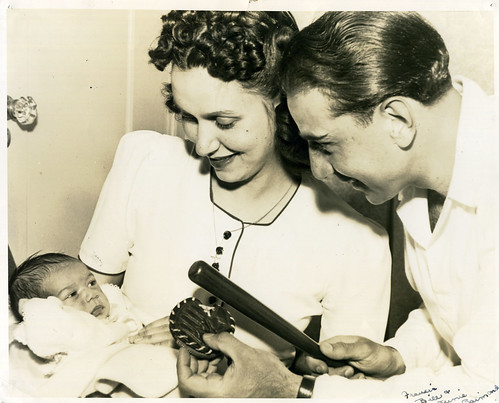With the World Series heading for Game 3 this evening, I’m pleased to present the latest guest post from Joe Guzzardi on a key player for one of the teams.
_______________
In my final regular season blog, I identified Minnesota Twins pitcher Matt Capps as baseball’s fortunate son. Capps went from a maligned Pittsburgh Pirates relief pitcher in 2009 to the 2010 American League Central Division champion Minnesota Twins’ closer. Making his year even sweeter, Capps had a detour in Washington where he was the Nationals’ only All Star representative.
Unfortunately, Capps’ season came to an abrupt and unglamorous end. The New York Yankees swept the Twins in three straight first round playoff games. Capps appeared in only one and gave up an earned run in the single inning he pitched.
As it happens, baseball has an even more fortunate son. Freddy Sanchez, Capps’ 2009 Pirates teammate, is now playing an unerring second base for the National League champion San Francisco Giants and, in the opener, became the first player ever to hit three consecutive doubles in his first three World Series at bats.
Unlike Capps with whom fans grew unhappy because of his poor clutch pitching during his final Pirates season, Sanchez is one of the most popular players in Pirates’ history.
Bucco fans love Freddy for a lot of reasons. During his five and a half years in Pittsburgh, Freddy was one of the few reasons to root for the Pirates. A three-time All Star and the 2006 National League batting champion (.344), Sanchez with his boyhood friend Jack Wilson made up one of baseball’s best double play combinations. Sanchez and Wilson, both native Californians, once played summer league ball together although Jack then a second baseman and Freddy, a shortstop.
Given the media’s fascination with hard luck stories in sports, I’m amazed that more hadn’t been previously written about the personal adversity that Sanchez overcame.
Doctors gave Sanchez, born with a club right foot, little chance to walk. Every night, his mother Michelle removed his cast, hoping to eventually see a straightened foot. Yet despite the long odds against him Sanchez, who attributes his recovery to faith and hard work, became an outstanding major league baseball player.
In the Pittsburgh suburb of Cranberry, Sanchez helped build Miracle Field where disabled kids play baseball. In June, when the Giants came to Pittsburgh, Freddy was out at Miracle Field taking in a game.
Although being traded to the Giants is the best baseball thing that ever happened to Sanchez, his road in San Francisco has not been smooth. Sanchez had left knee surgery in September 2009 followed four months later by an operation on his left shoulder. Just a month before the playoffs started, Freddy’s right rotator cuff strain made it nearly impossible for him to throw the ball to first base.
As the World Series moves to Texas, Sanchez has been one of the Giants unsung heroes. Sanchez says: “You want to be up with everything on the line. You don’t always come through, but all you can ask for is the chance.”
Given the chance, Sanchez hit .292 this season— .330 from August 1 on— and .360 when the Giants beat the Phillies in six games. After two World Series games, he’s hitting .400 and handling the keystone flawlessly.
Anyone who watched the first post-game Sanchez interview saw his graciousness. While talking about how thrilling it is play in the World Series, Sanchez had this message for long-suffering Pirates fans: “That’s the one regret I have, that we didn’t get it done for those fans. Pirates fans are so great, and they stand behind their team. They deserve a winner there.” (Watch Sanchez during his midseason return to Pittsburgh praise the Pirates fans here.)
Whenever a deserving, good guy like Sanchez stars in the national spotlight, all of baseball is the better for it.
_______________
Joe Guzzardi belongs to the Society for American Baseball Research, as well as the Internet Baseball Writers Association of America. Email him at guzzjoe@yahoo.com
